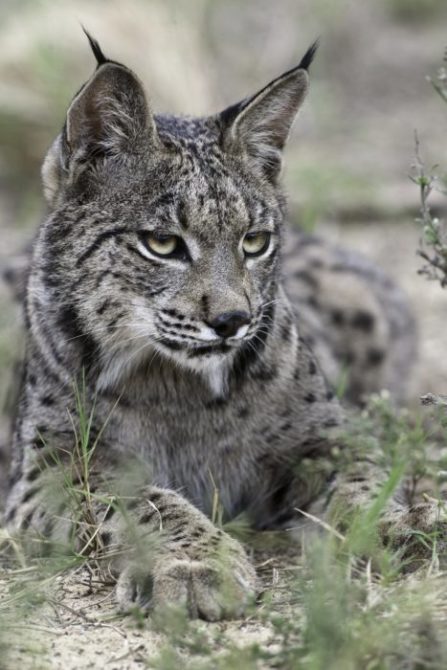Cat Chat Show Notes July 24 2013
Cat Cat Show 13
Khaleesi Goes Outside
https://bigcatrescue.org/khaleesi
New Video for Big Cat Ban HR 1998
Bella the Tigress
https://bigcatrescue.org/bella/
She has an infection. We fear it is cancer. We will be sedating and drawing blood and doing an exam. But if it is, then what?
Tiger Destroys Golf Cart
More Big Cat News
https://bigcatrescue.org/today-at-big-cat-rescue-july-23-2013/
Abused Leopards
50 Years or Less for Iberian Lynx Extinction
The Iberian lynx, with two small and isolated populations and about 300 individuals left, is considered the most endangered cat in the world.
The Iberian lynx, the world’s most endangered cat, will probably go extinct in 50 years as a result of climate change, a new study in the journal Nature Climate Change reports.
The Iberian lynx looks like a bobcat. It has grayish fur covered in dark spots, long legs, a short black-tipped tail, and black-tufted ears. There are only an estimated 250 Iberian lynx left in the wild, which survive in two isolated breeding populations in Southern Spain.
During the twentieth century, populations sank to a catastrophic low because of dramatic reductions in the big cat’s main food source — the European rabbit. The rabbit makes up more than 80% of the Iberian lynx diet, according to the study, but a mix of disease and over-hunting has made the rabbit scarce.
Climate change will put the final nail in the coffin, says lead author Miguel Araújo and colleagues.
Researchers contend that current recovery plans — captive breeding programs that facilitate the reintroduction of the Iberian lynx into the wild — are not effective because they don’t account for the impact of climate change, which will make Southern Spain and Portugal unsuitable habitats for the lynx by mid-century. The outcome is not likely to change even if strong efforts are made to reduce greenhouse gas emissions within this century, the report finds.
“Survival of the species in the long term may require higher latitude and higher altitude regions on the Iberian Peninsula,” according to a statement from the University of Adelaide’s Environment Institute.
The Iberian lynx can be saved, but it will require “a carefully planned reintroduction programme, accounting for the effects of climate change, prey abundance and habitat connectivity,” the authors write.

Dina Spector Jul. 22, 2013, 10:11 AM 1,657
CSIC Andalusia Audiovisual Bank/ Héctor Garrido
Hamburger Mary’s Drag Queen Bingo Event
Tuesday July 30 at 7:30 PM

Subscribe to our weekly live Cat Chat Show in iTunes or on YouTube.com/DailyBigCat









